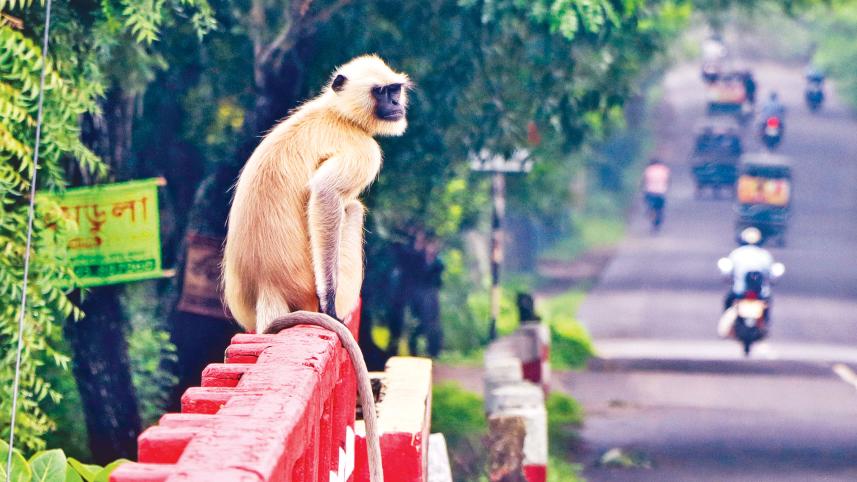The lonesome langur …

A Hanuman langur sits on the railing of the Batiaghata bridge in Khulna, its long tail trailing behind. Forced into human spaces by shrinking forests and scarce food, it scans the roadside trees for fruit.
A Hanuman langur sits on the railing of the Batiaghata bridge in Khulna, its long tail trailing behind. Forced into human spaces by shrinking forests and scarce food, it scans the roadside trees for fruit. These langurs, native to the Indian subcontinent, inhabit dry forests, scrublands, and even urban parks, feeding on leaves, fruits, flowers, and seeds. Though listed as "Least Concern" by the IUCN, they face habitat loss, road accidents, and human conflict. Sacred in Hindu mythology as followers of the monkey-god Hanuman, they often live near temples and villages. With expressive black faces, agile leaps, and strict social hierarchies, they are vital to South Asia's ecosystem.
PHOTO: HABIBUR RAHMAN



 For all latest news, follow The Daily Star's Google News channel.
For all latest news, follow The Daily Star's Google News channel.
Comments